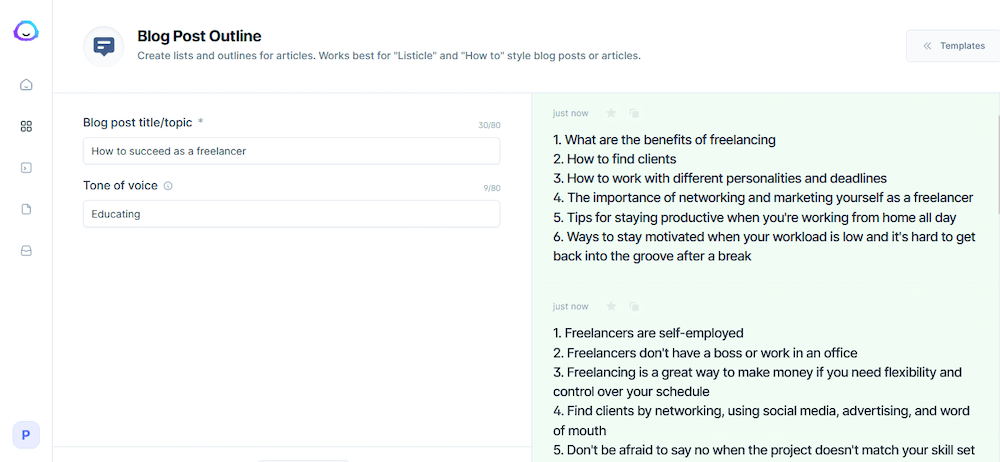Free
How to Start Writing a Book as a Beginner 10 Steps
Are you ready to write your first bestseller? We know it can be daunting, but don’t worry, we’re here to guide you every step of the way. Our expert tips on how to start writing a book as a beginner will set you on the path to success. Plus, we’ll share 10 easy steps for you to follow, along with the must-have writing tools you’ll need.
Figuring out how to start writing a book can be overwhelming, but we’ve got you covered. Here are 10 steps that will help you on your journey to becoming an author, and maybe even a bestselling one at that!
1: Make a plan
To write a book from start to finish, you need to dedicate time and effort. Create a schedule and establish a daily writing routine. Consistency is key!
2: Find your inspiration
Before you start writing, make sure you have a clear idea of what your book will be about. Write a brief synopsis to keep you focused and motivated throughout the process.
3: Outline your book
Create an outline that outlines the main events and chapters of your book. This will provide you with a roadmap to follow as you write.
4: Do your research
Good writing requires research. Use the internet, libraries, and real-life experiences to gather information and enrich your story.
5: Embrace the messy first draft
Let your creativity flow and don’t worry about perfection in your first draft. Focus on getting the story out, and worry about polishing it later. Set goals and stay consistent in your writing routine.
6: Edit and revise
The editing process is crucial to refining your work. Fill plot holes, improve storytelling, and make your book shine. Consider getting a professional editor for an expert review.
7: Polish your second draft
Address any changes suggested during the editing process and make your story even stronger. Cut unnecessary fluff and focus on making every word count.
8: Get feedback from first readers
Share your work with your target audience to gain valuable insights and feedback. Consider sending your book to trusted friends, family, or industry experts for their input.
9: Finalize your book
Make any necessary final edits and proofread your book. This is your chance to ensure that the message is clear and your cover design is eye-catching.
10: Publish your book
You have two options: self-publishing or traditional publishing. If you choose self-publishing, get your book formatted and ready to sell. If you opt for traditional publishing, find an agent and start pitching your book.
Discover the stress-free way to outline your book and unleash your creativity!
If the idea of outlining your book leaves you feeling overwhelmed, you’re not alone. Many new writers are unsure of where to start. However, outlining is actually a writer’s best friend, providing structure and guidance throughout the writing process.
But here’s the best part: outlining doesn’t mean you’re stuck with a rigid plan. Think of it as a flexible roadmap that can evolve and adapt as you write. It’s the secret to knowing exactly what you’ll be writing about each day, instead of wasting precious time figuring it out as you go.
Now that we’ve convinced you of the benefits of outlining, let’s dive into how to do it effectively:
1. Choose your style
There are various methods for outlining, such as mind maps, post-its, or index cards. We recommend starting with a basic summary outline, which we’ll guide you through step by step. It’s the tried-and-true chapter by chapter approach that keeps you organized and focused.
2. Harness the power of a writing assistant

Simplify your writing process and save time with a writing assistant. Our top recommendation, Jasper, offers a Blog Post Outline template specifically designed for outlining book chapters. With just your book title and desired tone, Jasper can generate an outline tailored to your needs. You can even use Jasper’s AI story generation tools for a vibrant and engaging story!
3. Give your book structure
Every successful non-fiction book offers a solution to readers’ problems, and yours is no exception. Your outline is the backbone that helps you deliver your message effectively. Just as Anne Lamott advises, a writer strives to be part of the solution and offers insights into life. Your outline should have a clear introduction, a captivating middle, and a satisfying conclusion. It should lay out the problem, your personal journey, and your method of solving it. From there, the meat of your book provides strategies to help readers overcome similar challenges.
4. Craft insightful chapter overviews and subheadings
To make your writing process smoother, include detailed notes for each chapter in your outline. Consider posing questions to yourself that you’ll answer in each section. For the introduction, grab readers’ attention from the first page by sharing an anecdote or personal experience that resonates with their specific problem. Highlight your unique value proposition and why readers should trust your expertise. Need help? Jasper’s Unique Proposition Template is here to assist you every step of the way.
5. It’s time to write!
Armed with your polished outline, you’re ready to tackle the exciting task of bringing your book to life. Follow our step-by-step guide to writing your own book and watch your words flow effortlessly onto the page. We believe in you, future bestselling author!
Ready to write your first book? We’ve got you covered with these five helpful resources and writing tools for beginners.
1. Meet Jasper, the AI writing assistant who’s a pro at writing books. From outlining to crafting a powerful conclusion, Jasper is there to support you every step of the way. Just type a couple of sentences, and Jasper will keep the words flowing. Get started for as low as $39/month.
2. Need a comprehensive tool? Check out Scrivener. With its word processing and outlining capabilities, it’s the favorite choice for many writers. Keep track of chapters and headings effortlessly. Licenses start at just $19.99 for iOS.
3. Looking for some inspiration? Anne Lamott’s book “Bird by Bird” is the perfect warm guide for both new and experienced writers. Dive into inspiring stories about writing and life, and find the encouragement you need.
4. For non-fiction writers, “On Writing Well” by William Zinsser is a classic resource. Whether you’re writing about sports, business, or memoirs, Zinsser covers it all. Learn the nuts and bolts of the craft from a master.
5. Stay focused and avoid distractions with Focus Writer. This tool helps you set daily goals, track word counts, and provides an immersive writing environment. Plus, it even has spellcheck, timers, and typewriter sound effects if that’s your thing.
So, are you ready to start writing your book? Don’t worry, we believe in you. Take it step by step, just like Lamott says, and let Jasper be your writing companion. Sign up for a free account and write your first book with Jasper now.






























